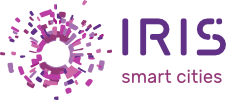The City of Gothenburg showed how using digital platforms for dialogue with citizens could benefit urban planning by using Minecraft – a popular video game that allows players to build and explore virtual worlds. They are now developing a methodology that can be used in other cities around Europe.

Back in the spring of 2022, the City Planning Office in the City of Gothenburg held a series of workshops on urban development at a school in Lärjeskolan, where Minecraft was tested as a mediating tool to create engagement with the students and collect their thoughts and ideas on their ideal living environment. These ideas would then be channeled towards the development of Hjällbo, a socially disadvantaged area in Gothenburg.
Anna Reuter Metelius, project manager for both the development program for Hjällbo and for local citizen engagement within the IRIS smart cities project, took the opportunity to share their experiences with the students at Lärjeskolan during the Smart City World Expo 2022 in Barcelona in November.
“In Minecraft, kids can move around their neighborhood at eye level and build spatial environments where they can more easily appreciate the scale of the created environments. An analog model building in a district can, on the one hand, can be easy to understand but perhaps a little too abstract when there is no opportunity to experience the rooms that are created. It was clear that the students could easily connect the real everyday environment to the environments they built in Minecraft” said Reuter Metelius.
The team leading the project concluded that the suggested spaces created were more tangible in the living gaming environment, compared to seeing renderings, floor plans or sketches. The play aspect of exploring a topic within a digital game also made it easier to get away from the “school effect” – that is, when children perceive that there is the right answer to questions asked by adults, and that in the classroom they would like to answer what they think the questioner wants to hear.
“We have noticed that the dialogue is promoted by adults and children meeting on the children’s playing field – the computer game. Minecraft bridges barriers that can arise in the conversation between adults and children. Here, the child can be the expert both in their living environment and with the tool, which benefits the conversation” Anna continued.
The theoretical frame of reference for the Minecraft project was laid out by Susanne Ollila, professor of organisational behavior. According to Ollila, Minecraft offers a reverse logic where knowledge about the habitat is gathered from citizens who are not usually heard, unlike the usual expert logic. She says it becomes a grassroots movement that opens up for co-creation and that is an important democracy issue.
How can we achieve climate neutrality? “By making children part of the journey” says Reuter Metelius, “children used Minecraft as a tool to reimagine spaces, identifying what they like, don’t like and want to develop. I believe it is essential to involve young people in decisions about environment, architecture, and urban development as they will inherit these spaces in future.”
The next phase of the project is to collect, analyze and package the results into a method that will be shared with other member countries of IRIS Smart Cities and beyond. You can download Anna´s presentation.


